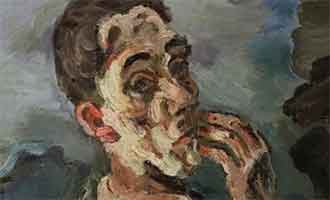The Nun of Monza – Ecstasy and Grace
Francesco Carelli, University Milan, Rome
“I want now to tell what happened to a person, who although had been immoral in the past, afterwards deserved for many years the name of perfect penitent and no less. Because of her sins and severe punishment, she lived relegated in a very narrow place. And while it was very hot and she heard the moans of people passing nearby, she felt the sweet freshness of gentle air, coming from some small cracks in the door, that by no natural way could give her such relief at that time, a relief not just by reducing excessive hot, but comforting all her affected insides, and restoring her in the whole.
Also, staying in that narrow place, where a bad smell always naturally stagnated, sometimes she smelled a very sweet scent, better than all sweetest scents, without any possible natural cause. In that period, she received divine consolations, and she cried a lot, and there were many devils going on tempting her, while she bravely resisted, so that in about fifteen years she never was guilty of sins, but humility, patience and silence were really great in her.”
Excerpt from “About a true penitence. Grace in 1622” by Federigo Borromeo
 The halls of the Serrone in the Royal Villa of Monza Royal Palace house the exhibition dedicated to the figure of Marianna de Leyva, better known as the Nun of Monza, portrayed in “The Betrothed” (I promessi sposi) by Alessandro Manzoni.
The halls of the Serrone in the Royal Villa of Monza Royal Palace house the exhibition dedicated to the figure of Marianna de Leyva, better known as the Nun of Monza, portrayed in “The Betrothed” (I promessi sposi) by Alessandro Manzoni.
She lived between 1500 and 1600, and her life was really troubled, and interlaced with the life and culture of the town of Milan in XVIIth century. According to her family’s will, she was compelled to become a nun and enter into the Nunnery of Saint Margaret in Monza. She was about twenty years old when was named Countess of Monza for her father choice. Then she met Gian Paolo Osio , who became her lover and lead her to perdition, and she shared with him the secret of atrocious crimes. Put to trial by the Church and jailed, she started a spiritual path of redemption, choosing loneliness and repentance in the cloister.
Visitors can experience physically the restriction in space and emotion to which the woman was forced for almost fourteen years, before her rehabilitation made by her spiritual judge, Cardinal Federigo Borromeo.
The bad nunhood
Thanks to the literary transposition made by Alessandro Manzoni, the case of the Nun of Monza is the most emblematic episode of disobedience to the convent rules by a young nun, but certainly not the only one. The opposition against the cloister life ties become clear because of a definite socio-economic phenomenon, the forced nunhood. The bad nunhood where young women, forced to enter the cloister against their will, to meet the family needs to maintain a privileged status. The birth of a female baby put just a question: is she to be married or put into convent? The answer to this question was determined by accurate calculation considering the number of sisters, the family possessions and the true probabilities of marriage for the little girl. The nunhood ensured a decorous situation and prevented the family wealth alienation by the onerous marriage dowry, always and anyway more onerous than cloister dowry, that was cheaper.
The consecration often was pushed through the daughters by deception, mortification, authority, creating such a hostile environment in the family to make little girls hope to get out as soon as possible and at any cost.
Already in XVIth century the Church tried to break this phenomenon: the Council of Trento clearly condemned to excommunication anyone found to be accomplice in forced nunhood. In effect, false vocations caused frequent transgressions of the rules of cloister life, originating sentimental scandals and personal dramas in the convents. The Nuns, to which contacts with external world were forbidden, notwithstanding exposed to contacts with males, succeeded in various ways in breaking the isolation circle built around themselves and in finding occasions to carry out their desperate “fight for affectivity”.



